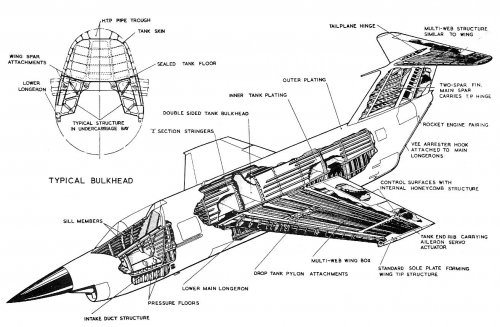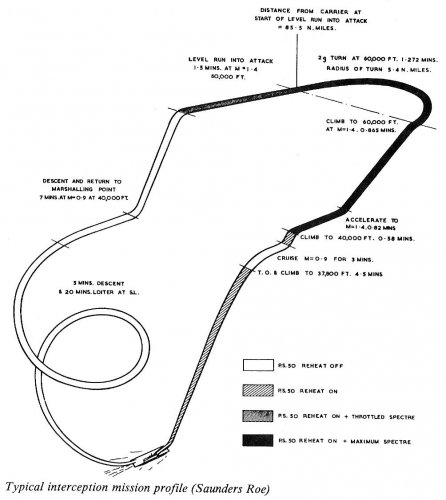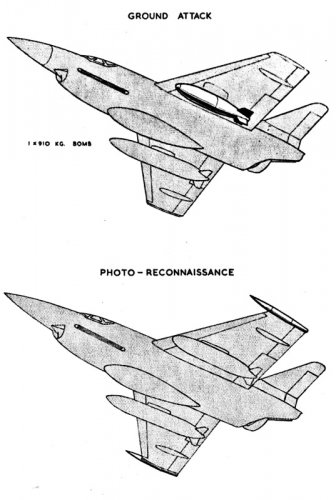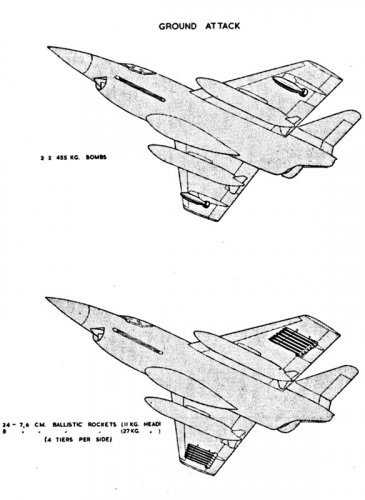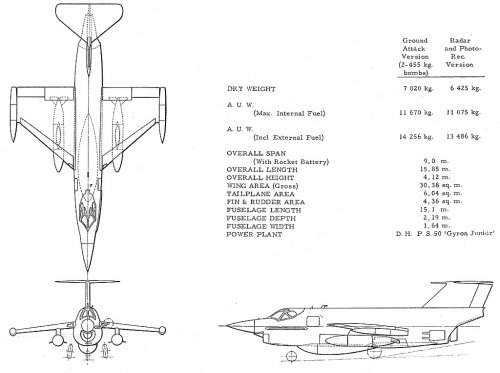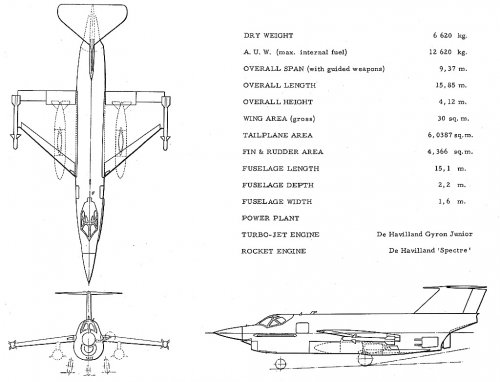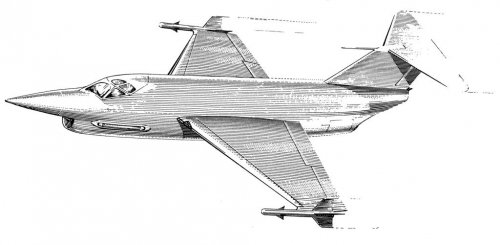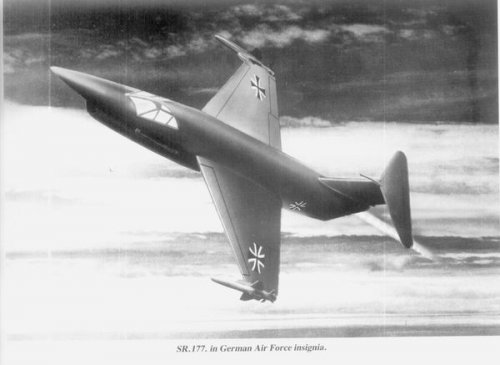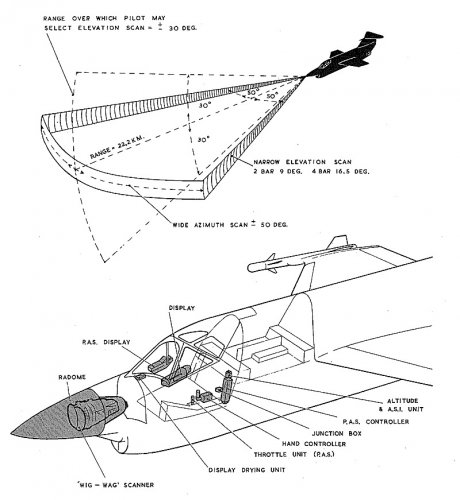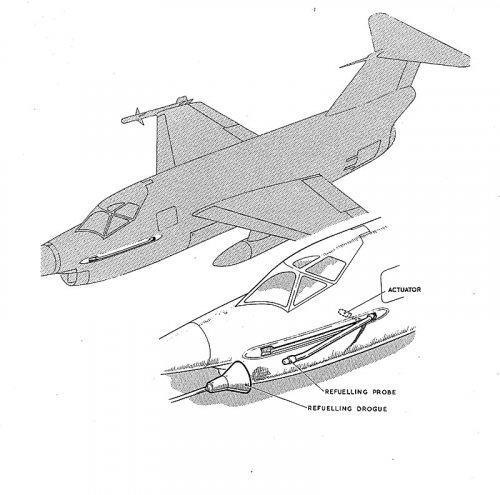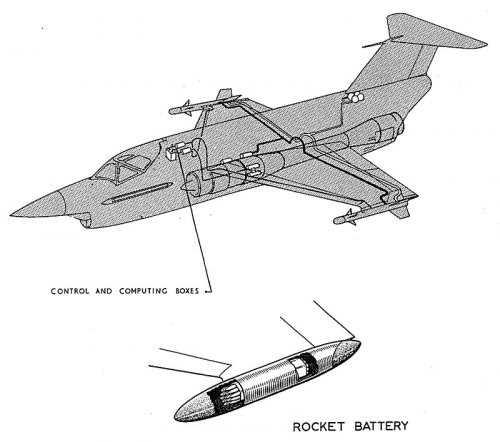I've cut and pasted this from another site
SR.177 is a mixed powerplant interceptor and quite a flexible design to boot.
Japan had a look at it too, and at one point examined weather to buy the SR.53's. and the production jigs.
Had it entered service, its most likely the RAF and RN would follow the Germans and opt for Avon powerplants to start with, considering that by 1960 rocket motors fell from favour.
The RB.106 "Thames" (which was designed to fit into the space for a Avon) would have nearly matched static thrust in reheat with the Gyron Junior and Spectre motors at 21,750lb (Gyron junior made 14,000lb reheated, Spectre was developed to 10,000lb).
Its biggest flaws are:-
1 lack of rear view (like a number of aircraft including the Crusader).
2 small 18-inch diameter dish AI.23 set, though its possible a larger set might be squeezed in (perhaps a 21 inch dish).
Its biggest pluses are:-
1 small size at 50.5ft long (45-ish with nosefold) and roughly 30ft span with a fold down to around 18ft.
2 High performance. Top speed was limited due to cheap materials for mass production. Reduction to jet only would've resulted in a Avon machine doing around mach 1.8 and a "Thames" doing around mach 2. Though ceiling would be down from the rocket powered 1g limit of 97,000ft.
3 Capacious internal volume for either rocket fuel or jet fuel.
There is a bit more information here
http://www.spaceuk.org/index.htm (click on the rocket interceptors section).
http://www.spaceuk.org/sr53/177/sr177.htm
Anyone want to suggest what might have been had it survived the 1957 defence white paper?
SR.177 is a mixed powerplant interceptor and quite a flexible design to boot.
Japan had a look at it too, and at one point examined weather to buy the SR.53's. and the production jigs.
Had it entered service, its most likely the RAF and RN would follow the Germans and opt for Avon powerplants to start with, considering that by 1960 rocket motors fell from favour.
The RB.106 "Thames" (which was designed to fit into the space for a Avon) would have nearly matched static thrust in reheat with the Gyron Junior and Spectre motors at 21,750lb (Gyron junior made 14,000lb reheated, Spectre was developed to 10,000lb).
Its biggest flaws are:-
1 lack of rear view (like a number of aircraft including the Crusader).
2 small 18-inch diameter dish AI.23 set, though its possible a larger set might be squeezed in (perhaps a 21 inch dish).
Its biggest pluses are:-
1 small size at 50.5ft long (45-ish with nosefold) and roughly 30ft span with a fold down to around 18ft.
2 High performance. Top speed was limited due to cheap materials for mass production. Reduction to jet only would've resulted in a Avon machine doing around mach 1.8 and a "Thames" doing around mach 2. Though ceiling would be down from the rocket powered 1g limit of 97,000ft.
3 Capacious internal volume for either rocket fuel or jet fuel.
There is a bit more information here
http://www.spaceuk.org/index.htm (click on the rocket interceptors section).
http://www.spaceuk.org/sr53/177/sr177.htm
Anyone want to suggest what might have been had it survived the 1957 defence white paper?

